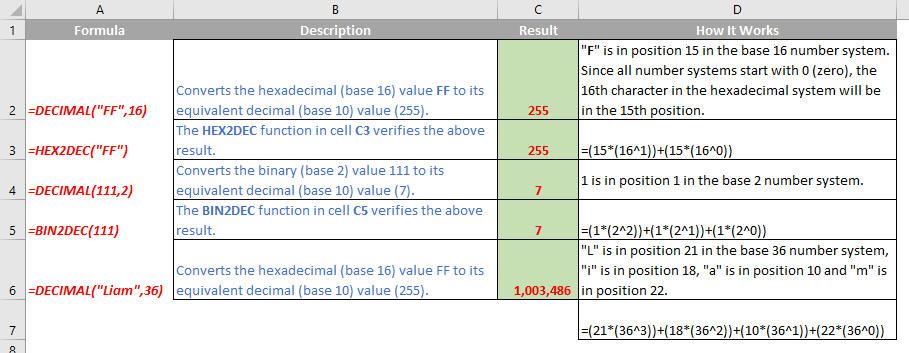A to Z of Excel Functions: The DECIMAL Function
9 July 2018
Welcome back to our regular A to Z of Excel Functions blog. Today we look at the DECIMAL function.
The DECIMAL function
This function converts a text representation of a number in a given base into a decimal number (base 10).
The DECIMAL function employs the following syntax to operate:
DECIMAL(text, radix)
The DECIMAL function has the following arguments:
- text: this is required
- radix: this is also required and must be an integer.
It should be further noted that:
- the string length of text must be less than or equal to 255 characters
- the text argument can be any combination of alpha-numeric characters that are valid for the radix, and is not case sensitive
- Excel supports a text argument greater than or equal to 0 and less than 2^53. A text argument that resolves to a number greater than 2^53 may result in a loss of precision
- radix must be greater than or equal to 2 (binary, or base 2) and less than or equal to 36 (base 36)
- a radix greater than 10 use the numeric values 0-9 and the letters A-Z as needed. For example, base 16 (hexadecimal) uses 0-9 and A-F, and base 36 uses 0-9 and A-Z
- if either argument is outside its constraints, DECIMAL may return the #NUM! or #VALUE! error value.
Please see my example below:

We’ll continue our A to Z of Excel Functions soon. Keep checking back – there’s a new blog post every business day.
A full page of the function articles can be found here.

